By David Jen
The greenery of Oxford, England, in the United Kingdom, will help foster collaboration across disciplines when a new Ellison Institute of Technology facility completes in 2026.
Foster + Partners — a global studio for sustainable architecture, urbanism, engineering, and design — recently released designs for the interdisciplinary research and development center. The new campus will tackle four new areas of EIT’s mission: medical science and health care, food security and agriculture, clean energy and climate change, and government policy and economics.
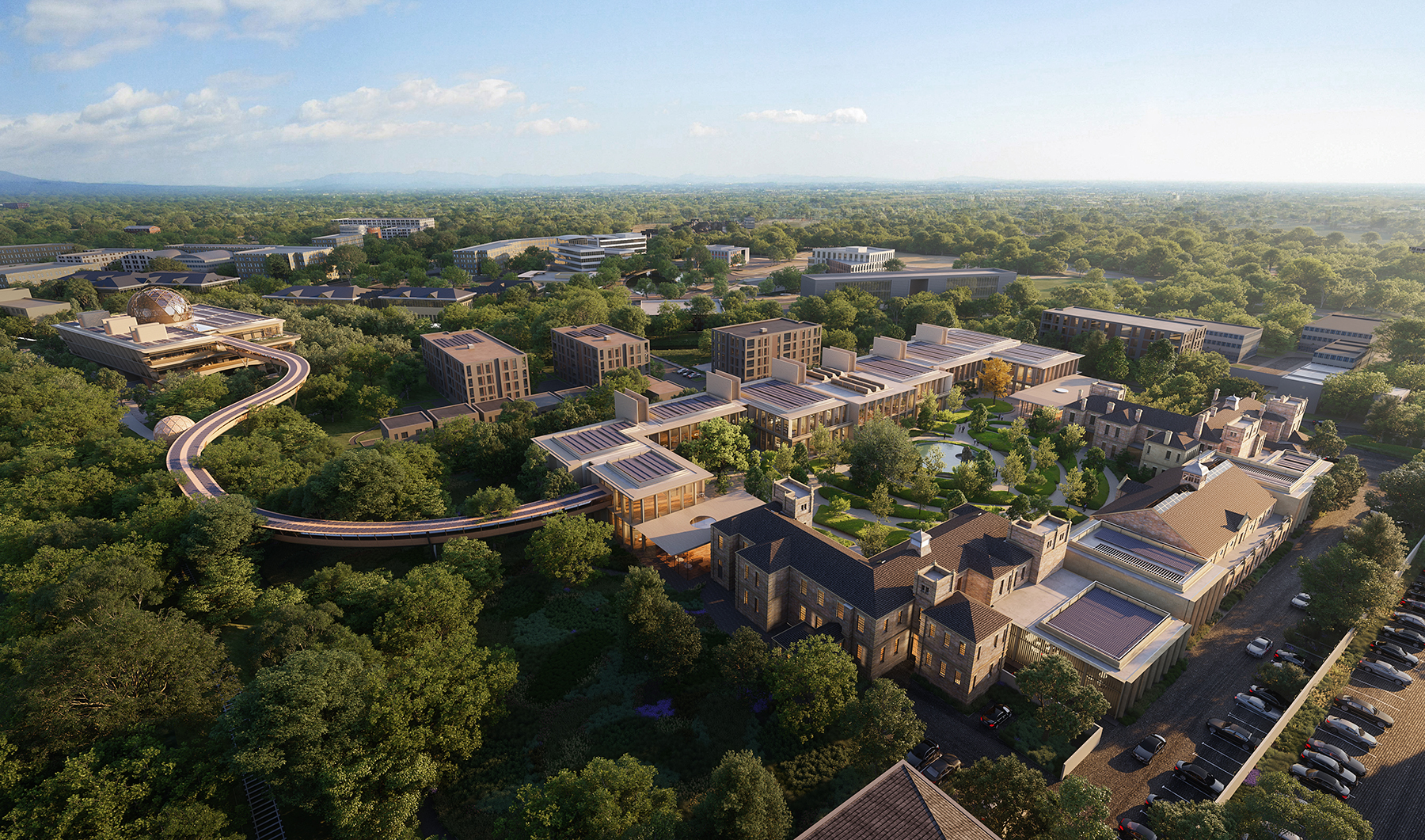
“Our design for Ellison Institute of Technology’s new Oxford campus creates a truly collaborative and nurturing environment, which will encourage research and breakthroughs,” says Norman Foster, the founder and executive chair of Foster + Partners, in press material. “A primary objective of the project is to break down barriers between researchers, scientists, clinicians, and patients, creating a human-centered and holistic approach to health care and technological innovation.”
The project will restore Oxford’s historic Littlemore House and transform it into a single-volume space with a library and study area. Previously a part of the larger Littlemore Hospital site, which treated mentally ill people from 1846 to 1998, the Littlemore House was converted in the late 1980s for research purposes, according to an Oxford City Council report and the Oxfordshire Health Archives.
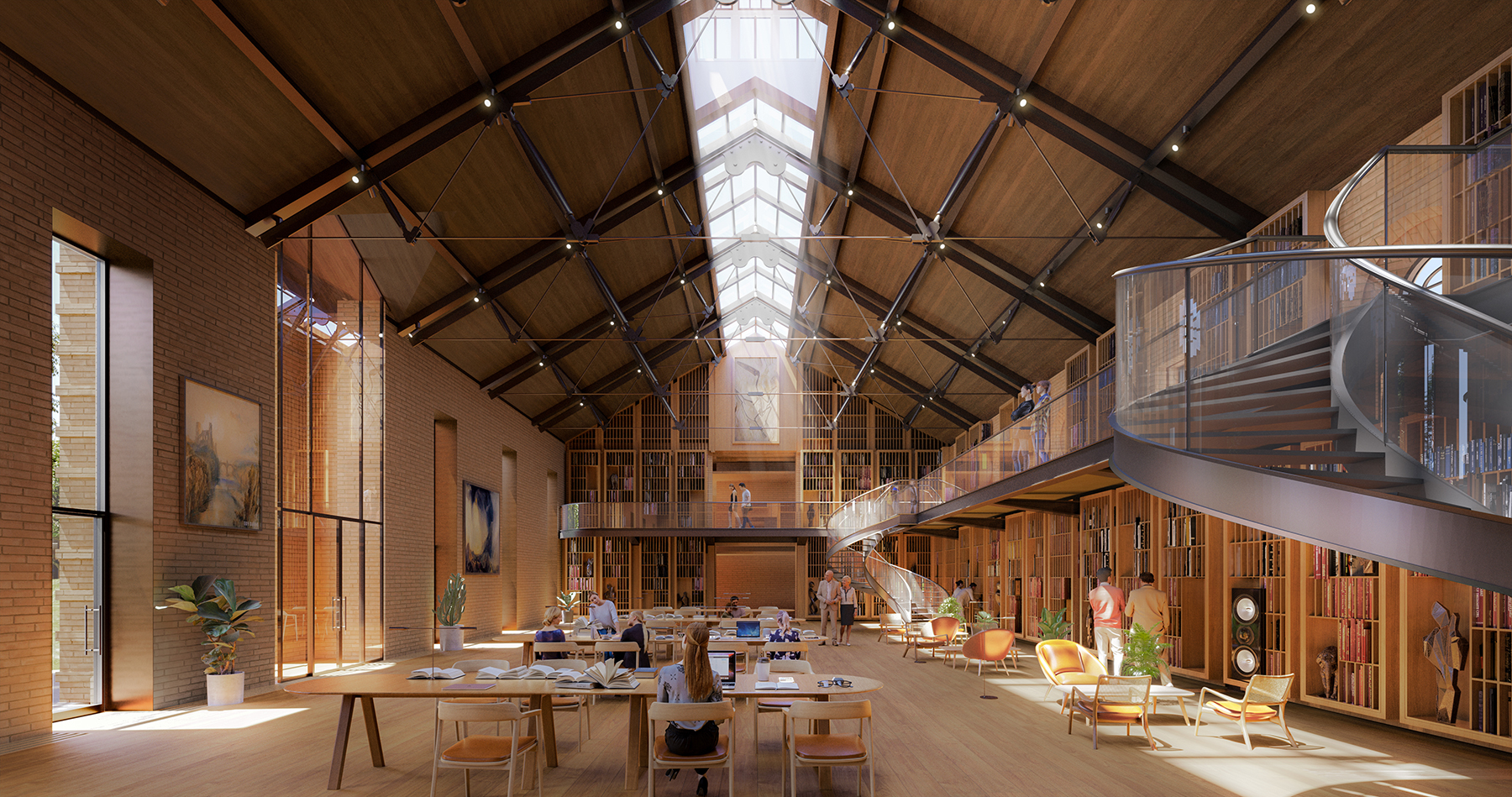
Together with the historic building, new pavilions on the plot will create a C shape to surround a landscaped courtyard. This courtyard will include a circular water feature and seasonal plantings “for patients, scientists, researchers, and clinicians to enjoy together,” writes Foster + Partners.
Beneath the courtyard, a sunken, 250-seat auditorium, lit by sunlight passing through the water feature, will provide a central meeting space for lectures and events.
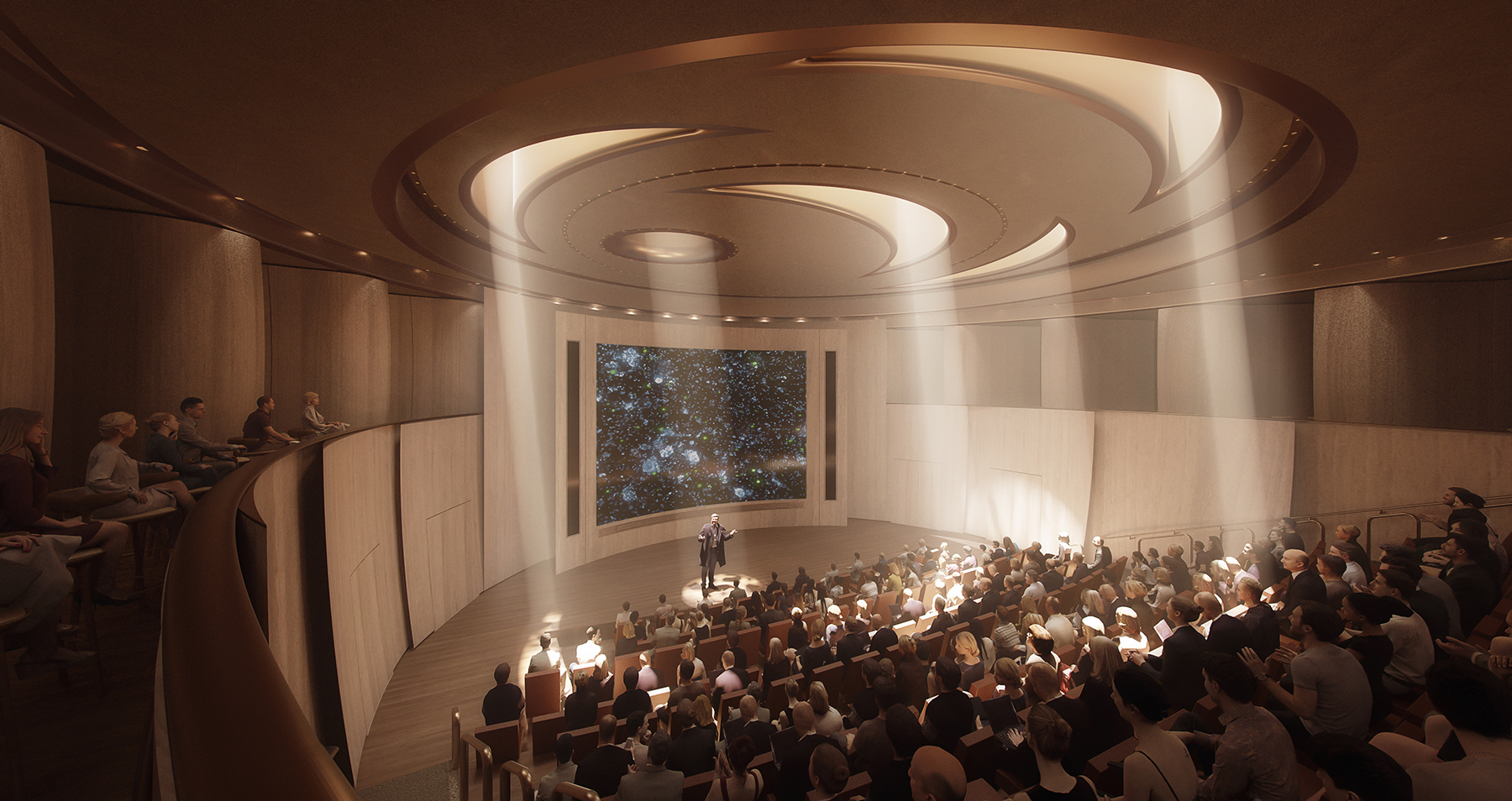
From the Littlemore House plot, an elevated walkway will meander 230 m through the treetops, stopping at a wooden dome halfway along, before continuing to the project’s second plot at the Oxford Science Park.
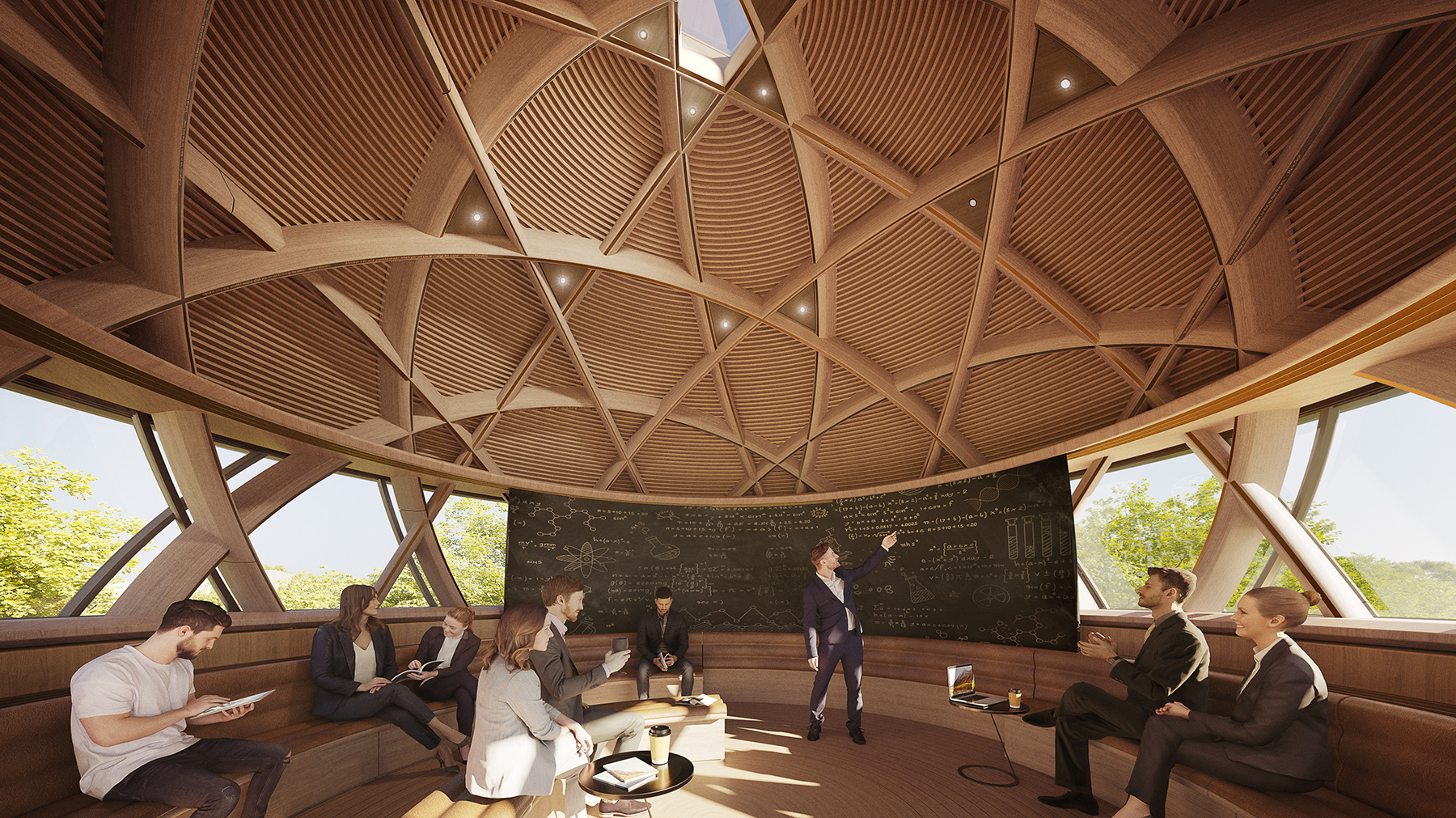
There, a new building, to be built on stilts because of the adjacent Littlemore Brook, will include a wooden geodesic dome on its roof, complete with rotating solar shading, as another prominent space for events and lectures.
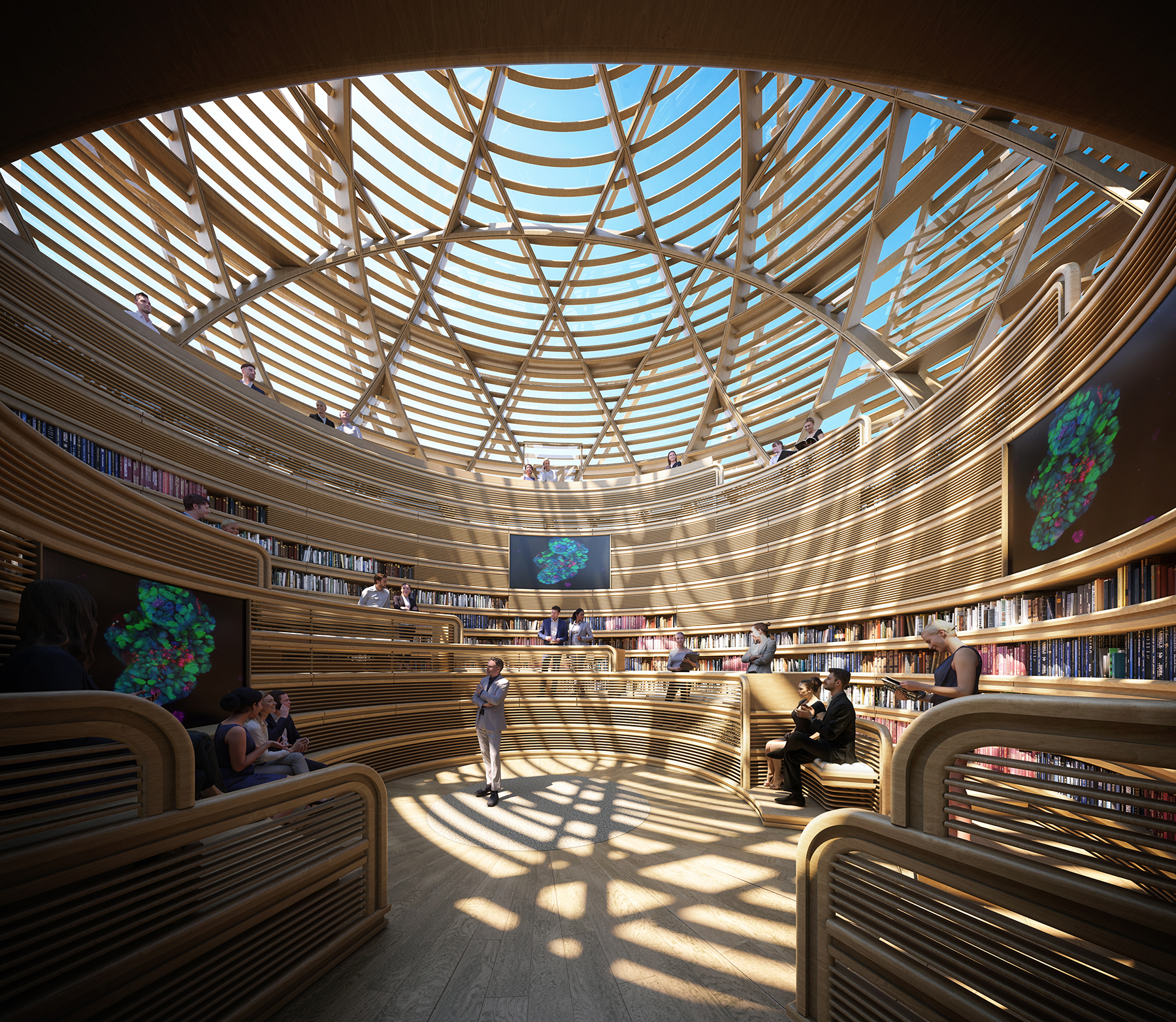
“We are working closely with the landscape architect, Fernando Caruncho, to restore greenery across both plots and provide spaces which enhance well-being for patients and staff,” says Gerard Everden, the head of studio for Foster + Partners.
In total, the project features 30,000 sq m of research laboratory space. It also plans for an oncology and wellness patient clinic alongside the campus’s educational and meeting spaces.
Photovoltaic panels on the campus rooftops will generate up to 422 MWh per year, according to Foster + Partners.
EIT established its flagship location in Los Angeles in 2016 to focus on cancer, health care, and global health research and development. In addition to its clinic, it includes an array of innovation labs, such as those for biomimetic models, artificial intelligence in medicine, and immersive visualization, according to the EIT website. “It’s the first organization of its kind to vertically integrate the interdisciplinary study and treatment of disease.”
The Oxford location will be EIT’s second in a planned series of global research campuses, writes Foster + Partners.
This article is published by Civil Engineering Online.



